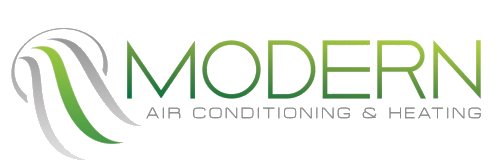Energy-Saving Tips for an HVAC System During Hot Summer Months
Implementing energy-saving practices can help maintain a comfortable indoor environment while reducing energy consumption.
During the hot summer months, keeping a home cool and comfortable can be challenging, and energy bills often soar. Implementing energy-saving practices can help maintain a comfortable indoor environment while reducing energy consumption. By following these tips, homeowners can optimize their HVAC systems for better efficiency and cost savings.
Regular Maintenance
Regular maintenance is crucial for an efficient HVAC system. Professional AC repair and routine check-ups by AC experts can identify and fix potential issues before they escalate. Cleaning or replacing filters, checking refrigerant levels, and inspecting the system for wear and tear are essential steps to keep the HVAC system running smoothly. Scheduling maintenance before the summer heat sets in can make a significant difference in performance and energy use.
Programmable Thermostat Installation
A programmable thermostat is an excellent investment for managing indoor temperatures more efficiently. Setting the thermostat to adjust temperatures automatically based on daily schedules can reduce energy consumption. For example, programming the thermostat to a higher temperature when the house is empty and lowering it when occupants return can lead to substantial energy savings. Using a programmable thermostat ensures the HVAC system operates only when necessary, avoiding unnecessary energy use.
Sealing and Insulating Ductwork
Leaky ducts can significantly reduce HVAC efficiency by allowing cool air to escape. Sealing and insulating ductwork helps maintain proper airflow and temperature control. Inspecting ducts for leaks and addressing them promptly can improve the overall performance of the HVAC system. Properly insulated ducts prevent energy loss, ensuring that the cool air reaches its intended destination without being wasted.
Utilizing Ceiling Fans
Ceiling fans can be a valuable addition to a home’s cooling strategy. Running ceiling fans while the HVAC system is operating helps circulate cool air more effectively. This allows the thermostat to be set a few degrees higher without sacrificing comfort, leading to energy savings. Ceiling fans create a wind-chill effect that makes the room feel cooler, reducing the reliance on the HVAC system.
Keeping Blinds and Curtains Closed
Sunlight streaming through windows can significantly increase indoor temperatures, causing the HVAC system to work harder. Keeping blinds and curtains closed during the hottest parts of the day helps block out the sun’s heat. Reflective or blackout curtains can enhance this effect, keeping rooms cooler and reducing the load on the HVAC system. Opening windows in the evening when temperatures drop can also help cool the home naturally.
Using Energy-Efficient Lighting
Traditional incandescent bulbs generate a lot of heat, adding to the indoor temperature. Switching to energy-efficient lighting options, such as LED or CFL bulbs, reduces the amount of heat produced. These bulbs use less energy and last longer, contributing to overall energy savings. Reducing the heat load from lighting helps the HVAC system operate more efficiently.
Cooking Strategically
Using ovens and stovetops can increase indoor temperatures, forcing the HVAC system to work harder to maintain a comfortable environment. Cooking during cooler parts of the day, such as early morning or late evening, can help minimize this effect. Alternatively, using outdoor grills, microwaves, or slow cookers can reduce the amount of heat generated indoors, easing the burden on the HVAC system.
Enhancing Home Insulation
Proper insulation is vital for keeping cool air inside and hot air outside. Inspecting and enhancing insulation in attics, walls, and floors can improve the overall energy efficiency of a home. Insulation helps maintain a consistent indoor temperature, reducing the workload on the HVAC system.
Planting Shade Trees
Planting trees or installing shading structures around the home can provide natural cooling. Trees and shrubs can block direct sunlight, reducing the amount of heat entering the home. Strategically placed shade trees can lower indoor temperatures, allowing the HVAC system to operate more efficiently. This eco-friendly approach not only saves energy but also enhances the home’s exterior aesthetics.
Using a Dehumidifier
High humidity levels can make indoor environments feel warmer, causing the HVAC system to work harder. Using a dehumidifier can help remove excess moisture from the air, making the home feel cooler and more comfortable. Dehumidifiers reduce the load on the HVAC system, leading to energy savings and improved efficiency.
Regularly Changing Filters
Changing HVAC filters regularly is essential for maintaining optimal airflow and system performance. Clogged or dirty filters restrict airflow, forcing the system to use more energy to cool the home. Replacing filters every one to three months, or as recommended by AC experts, keeps the system running efficiently and improves indoor air quality.
Implementing these energy-saving tips can help homeowners keep their homes cool during the hot summer months while reducing energy consumption and costs. Regular maintenance, smart thermostat use, sealing ducts, and enhancing insulation are all effective strategies to optimize HVAC system performance.
Modern Air Conditioning & Heating is a Boulder City-based HVAC company offering 15 years of experience in residential and commercial HVAC services for all makes and models.

